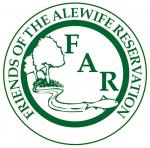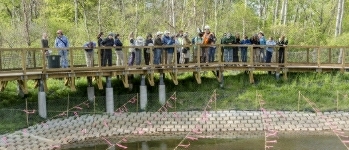Posted on December 7, 2014

Iceberg2014 will go down in the annals of Cambridge political history as the year long-simmering frustrations with the Planning Board boiled over, as more and more residents began to realize the People’s Republic had left them out in the cold while the city’s planners stoked the white-hot real estate development market.
After months of intense and intensifying scrutiny, the Board paused to reflect on its own procedures and process during an unusual public hearing on October 28 and again during a Roundtable discussion with the City Council on December 1. At the October hearing Assistant City Manager for Community Development Brian Murphy stated that the city is committed to making changes to ensure “an open, transparent and accessible process.” During the December Roundtable, Board member Ted Cohen acknowledged that by the time development proposals have their first public hearing they are “fairly frozen,” while Chair Hugh Russell remarked that 99% of the planning is done by CDD and that what’s discussed at the public hearings is the “tip of the iceberg.”
Indeed, it would be hard to find any group of stakeholders that believes the current process meets Mr. Murphy’s goal. Not residents, who feel excluded until too late in the process with their reasonable concerns over the impact of large projects on traffic, the environment, and existing neighborhoods largely ignored. Not developers, who experience costly delays, as hearings are continued multiple times, while the project’s broader impact and public benefits are debated. Not the Board members themselves, who believe their quasi-judicial role is fundamentally misunderstood and their hard work unappreciated, even as the deficiencies and inefficiencies of the public engagement process increase their workload. Not City Councillors who hear the outcry from resident-constituents, but feel their hands tied because they neither appoint nor oversee the Board. Seldom mentioned publicly is the pressure Councillors feel from those in the real estate industry, which is a major source of campaign donations for all except Councillors Dennis Carlone and Nadeem Mazen.
At the October hearing, Russell, a member for twenty-five years, complained that “Public input is often not helpful,” while East Cambridge resident and Sullivan Courthouse opponent Ilan levy protested, “You didn’t pay attention to us.” Both have good reason to feel aggrieved. One can reasonably conclude that the process is “broken” without assigning blame to any one group. Collectively we have failed to create the conditions in which a planning process that is open, transparent and accessible can take place – especially with respect to giving neighborhood residents a meaningful say early on in the process, before plans are so far along that developers and their investors are loathe to revise them. Of critical importance to resolve now is how to foster a community engagement process to solicit early public input that is both helpful and worthy of the Board’s attention.
The city is piloting a participatory budgeting process — why not embrace a participatory approach to planning? Led by Cambridge Residents Alliance co-president Nancy Ryan and Central Square Business Association officer Patrick Barrett, a group of residents from across the city has been working together since early this fall to develop a system to formalize neighborhood involvement. I was part of the working group along with Fresh Pond Residents Alliance officers Doug Brown, Bob Simha and Peggy Barnes Lenart, and Lee Farris of the CRA and the Area 4 Neighborhood Coalition.
Our recommendation is to require every developer to appear before what we’re calling a “Neighborhood Advisory Council” (NAC) comprised of neighbors, abutters, and area residents as a pre-condition of applying for a special permit under Article 19. As an incentive for developers to share their intentions with residents at a much earlier stage than is now customary, the formation of an NAC would temporarily freeze the existing zoning for the parcel, thus removing the perceived threat of a downzoning petition. Over the past two months we have circulated a draft zoning amendment for creating and administering the NACs to the City Manager, Mr. Murphy and CDD staff, the Planning Board, and members of the City Council, as well as leaders of other neighborhood groups.
Key points include:
- Each project would have its own ad-hoc NAC, composed of members recommended by established neighborhood groups along with area residents identified by CDD; all members would be appointed by the City Manager.
- Each NAC would be self-governing and would work with city staff to understand the zoning and to evaluate traffic, urban design, environmental, and other impacts.
- All NAC meetings would be public and other residents would be welcome to comment on the developer’s presentation and plans. The Planning Board could not hold its first hearing on the project until the relevant NAC had met at least once and had submitted written comments and recommendations.
- The NAC process would not preclude the developer meeting with existing neighborhood groups or other parties, nor would it replace public comment at the project’s eventual hearing(s) before the Planning Board. It is our sincere hope, however, that such public comment would be more “helpful” with the benefit of a prior NAC process to inform it, and that Board would be more inclined to “pay attention” to the NAC’s recommendations in its deliberations.
- Last week we met with CDD staff and an MIT graduate student they have assigned to research community engagement processes in other cities. They stated the research and review process is still in its early stages and that their own proposal to change to the ordinance to formalize a required community engagement process could be six months away. In the meantime, they say the Planning Board is considering changing its own rules to require earlier community involvement.
Jan Devereux, FPRA President

Article preserved 20145-12-08 from
http://freshpondresidents.org/2014/12/07/the-big-chill-civic-engagement-the-planning-process/
- Home
- Directions
- FAR Wildlife Blog
- Calendar
- News
- Donate Now
- Get Social!
- Storm Water Wetlands
- Plants and Restoration
- Photos
- Videos
- About & Projects
- Master Plan for Alewife
- Archive
- Newsletters
- Contact
 Presentation Spotlighting Alewife Reservation
Presentation Spotlighting Alewife Reservation
 Follow us on Twitter
Follow us on Twitter
 Like us on Facebook
Like us on Facebook
 Follow us on Instagram
Follow us on Instagram
Forward our web address to a friend!
- An Urban Gem - Alewife Reservation Nature Preserve
- Envisioning The Silver Maple Forest
- History and Policies of Cambridge, Belmont, and DEP
- Storm Water Wetlands
- Friends of Alewife Reservation brochure
(front, back) - Technical Analysis of Upper Alewife Basin
- Watershed: An Excursion in Four Parts
- The River Is A Restless Spirit: Life in the floodplain forest
-
Assessment of Silver Maple forest for DEP Adjudicatory hearings and
Patrick Fairbairn, author of the Assessment - Community Native Garden Flora
The
Alewife Reservation
is a unique natural resource for the communities of Belmont, Arlington and Cambridge
and home to hundreds of species, including hawks, coyotes beavers, snapping turtles, wild turkeys and muskrats,
the reservation is a unique natural resource for the community.
Historical information (Powerpoint)
Friends of Alewife Reservation works to protect and restore this wild area and the surrounding area for the water quality, native plants, animals and over 90 bird species with paths for walking, running and biking, recreation, and for classroom education and research. We regularly steward and preserve the Reservation area for wildlife and for the enjoyment of present and future generations.

(video)
By-Laws
About Friends of Alewife Reservation
Statement of Purpose
Citizen Forester newsletter archive
The Birds of the Cambridge Region of Massachusetts

by William Brewster 1906
Nuttal Ornithological Society
Biodiversity Study of Alewife Reservation Area: Species, Habitat, Ecosystems

Inventories by David Brown, wildlife assessor (2003, 2004.) Published by and available from FAR for $10. Write or call for your copy. (sample)
Updated Dave Brown Inventories (2008, 2010)
Inventories of Alewife Reservation Wetland Plants by Walter Kittredge, Botanist (2013)

